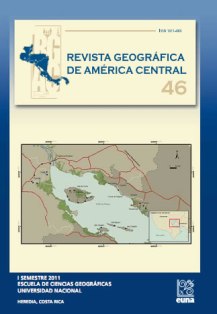RANKING DEL BIENESTAR SEGÚN CATEGORÍAS URBANAS EN LA ARGENTINA (2001)
Keywords:
Geography, well-being, urban hierarchy, population, rankings, Geografía, bienestar, ranking, escala urbanaAbstract
Existe una estrecha relación entre bienestar y escala urbana. Considerando una combinación ponderada de indicadores socioeconómicos y ambientales tenemos que las Aglomeraciones de Tamaño Intermedio (ATIS) grandes (entre 400.000 y 999.999 habitantes) poseen el mayor nivel de bienestar, seguidas por las ATIS medias (entre 50.000 y 399.999). Las ciudades grandes (más de un millón de habitantes) recientemente se ubican en un tercer escalón. Cruzando la escala urbana y la región se evidencian mejor estas diferencias. La mejor conjunción corresponde a las ATIS medias patagónicas, mientras que la peor es la que reúne a las ATIS medias del Nordeste Argentino (NEA).
Es decir que, más allá de la jerarquía urbana como factor de diferenciación, también deben considerarse los contextos regionales para intentar dimensionar más ajustadamente las diferencias del bienestar en Argentina.
ABSTRACT
A very close relationship exists between well-being and urban scale. If we consider a weighted combination of socioeconomic and environmental indicators, we find that bigger middle-sized cities (ATIS in Spanish) of between 400,000 and 1,000,000 inhabitants have the highest level of well-being, followed by middle ATIS, or cities, of 50,000 to 400,000 in population. The largest cities, those with a population of more than 1,000,000 ranked third. However, these differences are better evidenced by crossing urban scale and region. In other words, beyond urban hierarchy as a differentiation factor, the regional context must also be considered to more accurately gage differences in well-being.
Downloads
How to Cite
Issue
Section
License
Proposed policy for journals offering Open Access
Authors publishing their works in the Journal acknowledge and agree to the following terms:
a) Authors retain the copyrights to their works and guarantee the Journal the right to be the first to publish their works, under the Creative Commons License Attribution-NonCommercial-ShareAlike 4.0 International, CC BY-NC-SA 4.0 International (https://creativecommons.org/licenses/by-nc-sa/4.0/deed.es), which allows others to share works upon complying with the acknowledgment of authorship and mention of the Journal as the original publisher of the work.
b) Authors are permitted to separately establish additional agreements for the non-exclusive distribution of the official edition of the work published in the Journal (for example, authors may desire to place the work in an institutional repository or incorporate it into a book that is to published elsewhere) so long they acknowledgment to recognize the Journal as the original publisher. The aforementioned additional agreements must respect the terms of the non-profit character and sharing philosophy of the original license (CC BY-NC-SA 4.0 International, https://creativecommons.org/licenses/by-nc-sa/4.0/deed.es).
c) Authors are encouraged to archive the post-print or editor/PDF version in Open Access repositories.






 REVGEO is licensed under https://creativecommons.org/licenses/by-nc-sa/4.0/deed.es
REVGEO is licensed under https://creativecommons.org/licenses/by-nc-sa/4.0/deed.es
.svg_4.png)

_(1).png)
_(1)_(1)_(1)_1.png)
(2)(1)(1)(1).png)
